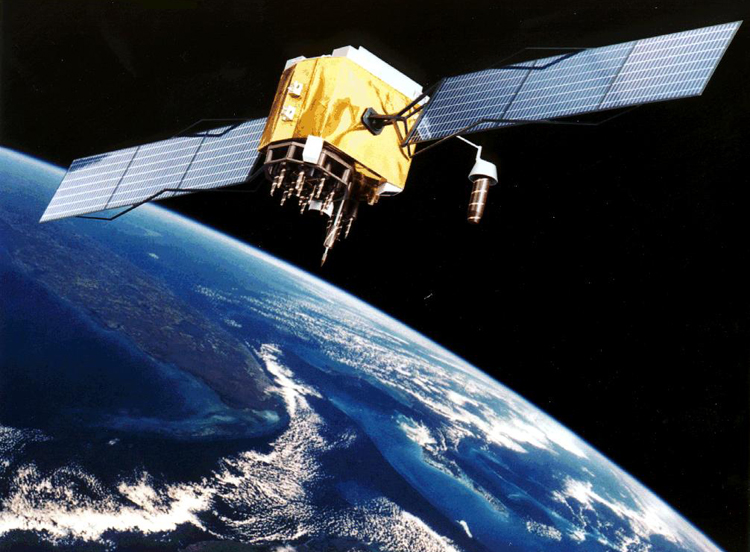INDIAN ARMED FORCES CHIEFS ON OUR RELENTLESS AND FOCUSED PUBLISHING EFFORTS

The insightful articles, inspiring narrations and analytical perspectives presented by the Editorial Team, establish an alluring connect with the reader. My compliments and best wishes to SP Guide Publications.

"Over the past 60 years, the growth of SP Guide Publications has mirrored the rising stature of Indian Navy. Its well-researched and informative magazines on Defence and Aerospace sector have served to shape an educated opinion of our military personnel, policy makers and the public alike. I wish SP's Publication team continued success, fair winds and following seas in all future endeavour!"

Since, its inception in 1964, SP Guide Publications has consistently demonstrated commitment to high-quality journalism in the aerospace and defence sectors, earning a well-deserved reputation as Asia's largest media house in this domain. I wish SP Guide Publications continued success in its pursuit of excellence.
- Global Partners Urged to Tap India's Shipbuilding Potential: Rajnath Singh at Samudra Utkarsh
- All about HAMMER Smart Precision Guided Weapon in India — “BEL-Safran Collaboration”
- India, Germany deepen defence ties as High Defence Committee charts ambitious plan
- G20 Summit: A Sign of Global Fracture
- True strategic autonomy will come only when our code is as indigenous as our hardware: Rajnath Singh
- India–Israel Joint Working Group Meeting on defence cooperation to boost technology sharing and co-development
China's AI-controlled Satellite
While the AI was induced from a ground-based station for the experiment, the operation for redeployment of the satellite was autonomous without any human intervention
 |
The Author is Former Director General of Information Systems and A Special Forces Veteran, Indian Army |

According to a report in the South China Morning Post (SCMP) quoting a paper published in the journal ‘Geomatics and Information Science of Wuhan University’, China successfully experimented with artificial intelligence (AI) control of its satellite ‘Qimingxing-1’ that ended up observing areas of India and Japan. China’s State Key Laboratory of Information Engineering in Surveying, Mapping and Remote Sensing (LIESMARS) allowed its remote sensing satellite in low-Earth orbit to observe parts of India where army units are stationed. The AI also looked at a Japanese port that often stations US naval vessels. Qimingxing-1 is an experimental satellite reportedly used by Wuhan University students.
While the AI was induced from a ground-based station for the experiment, the operation for redeployment of the satellite was autonomous without any human intervention. By picking up locations on the earth using AI Qimingxing-1 was directed autonomously to Bihar’s capital Patna with a nearby cantonment of Danapur which houses the Bihar Regimental Centre. This was evidently more than a coincidence since soldiers of the Bihar Regiment were involved in the encounter with PLA at Galwan in Eastern Ladakh on June 15, 2020. In Japan, the location chosen was Japan’s Osaka port, one of the busiest and which also hosts US Navy vessels from time to time operating in the Pacific.
China successfully experimented with artificial intelligence (AI) control of its satellite ‘Qimingxing-1’ that ended up observing areas of India and Japan
The locations were selected by AI through instructions fed by the researchers but the autonomous operation of Qimingxing-1 continued for 24 hours without any human intervention or assignment. The aim of this experiment was to see what AI would do if left to its own devices. The Chinese researchers claimed that while AI technology is increasingly being used in space missions, such as for image recognition, mapping out flight paths, and collision avoidance, it has not been given control of a satellite, resulting in a waste of time and resources. They say that the remote sensing satellites have a short lifespan and are expensive. Therefore, it is crucial to make the most of their usefulness with new orbital applications.
According to a US Department of Defense (DoD) report to Congress in November 2022, China nearly doubled the number of its intelligence, surveillance and reconnaissance (ISR) satellite platforms in the past four years, and its total satellite fleet, numbering 260 platforms, is second only to that of the United States. However, according to a report published by the ‘Statista Research Department’ on April 13, 2023, of the 5,465 active artificial satellites orbiting the Earth as of April 30, 2022, 541 belonged to China.
AI technology is mostly dependent on human orders and assignments before taking any action. But the Qimingxing-1 satellite experiment shows that China plans to task its remote-sensing satellites that are sitting idly for specific missions with the help of AI. Also, to provide the AI with basic information there is a requirement of building a huge database and factoring in a number of variables from environmental conditions to technological limitations. The process is intricate but the basics appear to have been mastered by the Chinese, which also explains China’s extensive spy network including spy balloons. The AI controlling the satellite cannot chat but the experiment proved it was able to take action based on its understanding of the world.
PLA can use the AI-controlled satellite (s) to monitor any military or important location in India without us knowing it
Until now, most satellites required specific directives or tasks to operate. Unexpected occurrences like a war or an earthquake triggering an assignment required scheduling satellites to undertake ongoing observations of certain targets. China of course has 24x7 satellite coverage of its border with India, which enabled it to observe the gaps in Indian defences in Eastern Ladakh in May-June 2020 and absence of reserve formations on account of the lockdown, resulting in Chinese motorized divisions exercising in Aksai Chin occupying vacant areas in Indian Territory.
The SCMP post says that the Qimingxing-1 experiment was done to test how an AI would behave while operating an object in space. According to the accounts of the "landmark experiment," a ground-based AI controlled the tiny Earth observation satellite Qimingxing-1 for 24 hours, without any interference from humans. Chinese researchers have now proposed that if it discovered anomalous objects or activities, an AI-controlled satellite might warn certain users, such as the military, the national security administration, and other pertinent institutions.
However, for AI to be effective, it must have a thorough awareness of the globe; as a result, it must learn not just how to recognise man-made and natural objects, but also how to understand the intricate and constantly-changing connections between them and the many human communities. According to LIESMARS, "The AI’s decision-making process was extremely complex. The machine needs to consider many factors – such as real-time cloud conditions, camera angles, target value and the limits of a satellite’s mobility – when planning a day’s work,"
Indian Space Research Organisation (ISRO) needs to examine and experiment with AI-controlled satellites, enabling these to comprehensively augment our national security infrastructure
As is the norm with China, Beijing would like to focus on how the Qimingxing-1 experiment can save lives with the AI mapping hurricane damage and disaster areas. This is no doubt true but the experiment has huge security implications for India; the PLA can use the AI-controlled satellite(s) to monitor any military or important location in India without us knowing it. This becomes even more serious with the Chinese plans to launch thousands of satellites in the future. No Indian military location could therefore be devoid of surveillance from Beijing putting a premium on passive security measures.
An associated risk is the AI becoming “over smart” and taking autonomous decisions – a danger currently under discussion and warned by Elon Musk, CEO of SpaceX as well. For, example the AI could take the autonomous decision to crash the satellite at a point it decides even though the country that launched the satellite may not have intend to do so. Our policy makers would have taken note of these developments. The Indian Space Research Organisation (ISRO), which has earned many laurels in space, needs to examine and experiment with AI-controlled satellites, enabling these to comprehensively augment our national security infrastructure.





